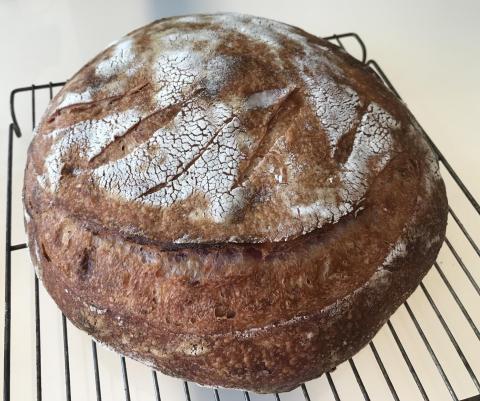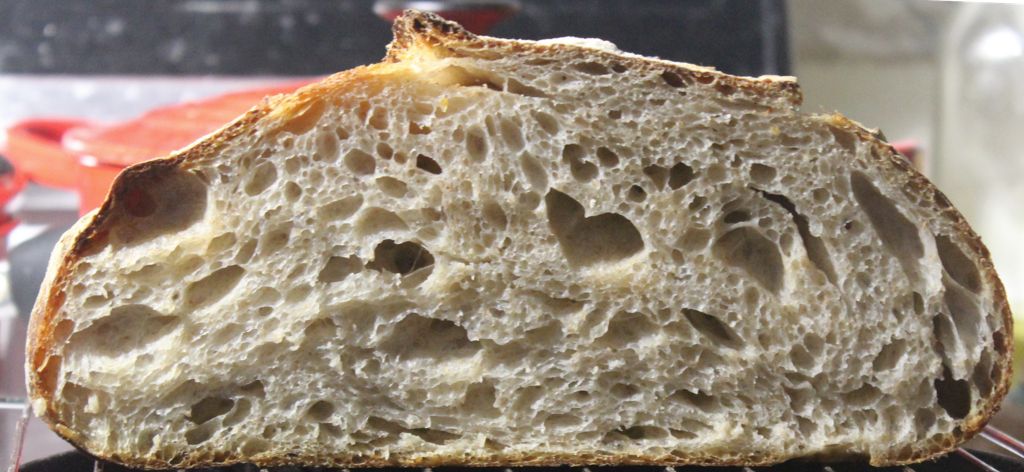
Purple Bread

Recently I encounter someone attempting to make a beet infused bread. It was greatly disappointing for the baker to discover that the beautiful color of beets did not survive the baking process.
Well, this got me thinking about what vegetable could be incorporated into bread to make a purple loaf. One answer is the mighty purple sweet potato. I have successfully used a potato water sourdough recipe from Northwest Sourdough before, so when I saw that she also had a Purple Sweet Potato sourdough I was decided. After a special trip to the upscale grocer to find a purple sweet potato and feeding up my fridge-napping starter I was ready to go.
Purple Sweet Potato Sourdough from Northwest Sourdough
Levain: 150 grams starter + 75 grams AP Flour + 75 grams water
Dough: 600 grams AP flour + 360 grams water + 420 grams pureed sweet potato + 18 grams salt
I created a levain mid-afternoon and when it was vigorously bubbling away (about 5 hours in my warm kitchen) I added the flour and water for autolyse. An hour later the pureed sweet potato and salt were added, squishing and folding everything together until the dough started to stiffen. Then bulk ferment about three and half hours with stretch and fold every 45 minutes. It was well into the evening when I pre-shaped, shaped, and put in the refrigerator for a 9 hour overnight retard.
Early this morning I heated the oven to 500F along with the pizza stone and my stainless steel mixing bowl cloche. Baked the loafs one at a time, turning the oven down to 450F, covered for 15 minutes, then 18-20 minutes uncovered. The loafs hung out in the oven with the door propped open while it cooled, in attempt to dry out the crumb a bit more.
The color held in the baked bread very well. The crumb is soft and moist, and the crust has a bit of chew. There is a distinct and unique flavor. Overall a fun bake. My dough handling could be improved as I think I deflated one of the loaves taking it out of the proofing bowl, and probably they needed to go in the fridge a bit sooner. Also, I think the dough could have really benefited from some additional gluten either with a stronger flour or with the addition of VWG. My tendency to try everything with AP flour is probably not ideal for a bread with so much added vegetable.











